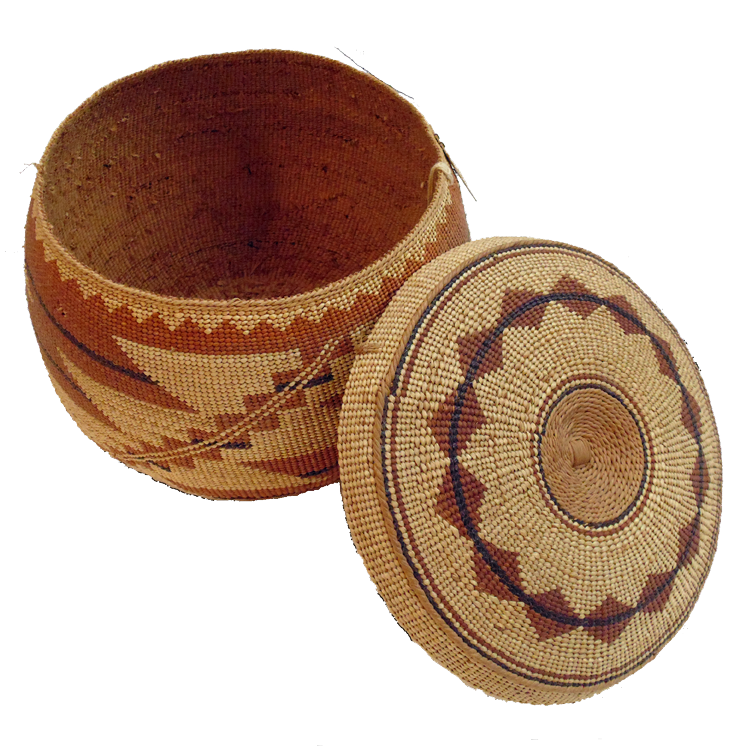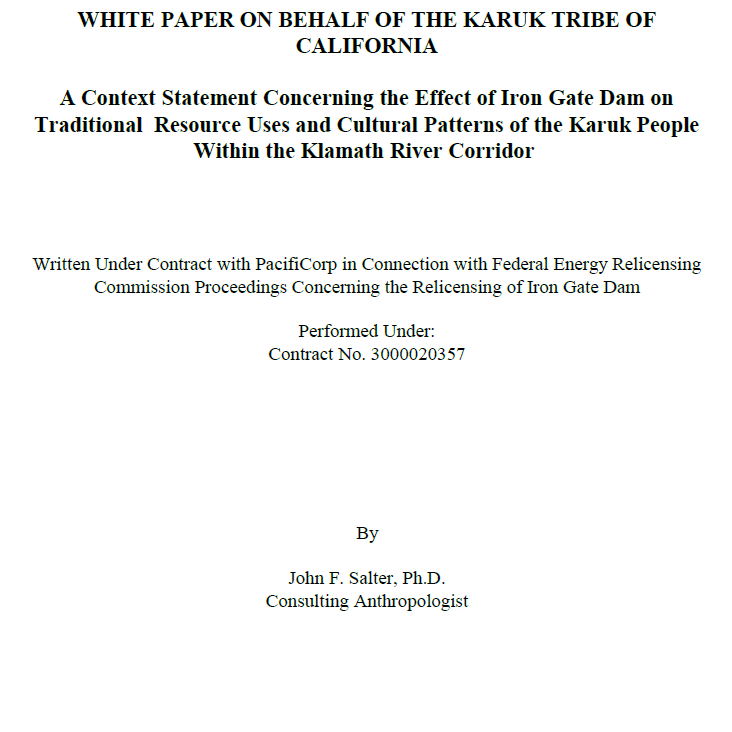White Paper on Behalf of the Karuk Tribe of California: A Context Statement Concerning the Effect of Iron Gate Dam on Traditional Resource Uses and Cultural Patterns of the Karuk People Within the Klamath River Corridor
This paper documents Karuk tribal uses of resources found within the Klamath River corridor which may be affected by the Klamath Hydroelectric Project. This great range of resources includes plants, animals, and fish as well as locations long enshrined in mythic accounts of legendary events. From millennia of dependence on these resources and location in the specific environment of the Klamath River corridor, a dense web of cultural practices and social institutions has developed that define the Karuk People. In order to establish the depth and unity of these cultural utilizations with the environment and their consequent vulnerability to influences inimical to the environment, the following strategy has been developed. Section I presents a reconstruction of the natural setting and patterns of early habitation of Karuk Ancestral Territory. Particular attention is paid to those cultural elements which are directly dependent on the Klamath River health and upon fish-based resources. Section II follows this establishment of setting and duration of cultural adaptations with a series of ethnographic interviews of Karuk people and knowledgeable individuals. Interviewees were presented with an extensive series of questions and issues concerning cultural and natural resources of the Karuk, and other Klamath River corridor tribes, which may be subject to effects caused by Iron Gate Dam. This same inventory has been incorporated in a series of white papers being written on behalf of these other tribes in conjunction with the upcoming Federal Energy Relicensing Commission (FERC) proceedings concerning relicensing of Iron Gate Dam. The utilization of similar inventories of questions and issues is intended to produce a body of information approaching the Klamath River as an extended ethnographic landscape reaching from the region of Klamath Lake and the territory of the Klamath Tribe to the River's mouth at the Pacific Ocean where the Yurok live. Interview transcripts have been coded according to the issues addressed by the informants. This section of ethnographic interviews and empirically-based observations is followed by Section III, Current Conditions and Historical Factors Affecting Fish Populations and River Health, a discussion of water quality and fish passage issues drawn from ethnographic and recent scientific literature. This paper ends with a Summary and Conclusion which summarizes the material developed in the text as described, bringing together, within an ethnographic context, the conclusions of formal articles with those of the Karuk informants concerning the effect of Iron Gate Dam on the cultural and natural resources of the Karuk Tribe and People.Provenance: Contributed to Sipnuuk Food Security Collection by Jennifer Sowerwine, Assistant Cooperative Extention Specialist at UC Berkeley, in association with her role as PI of the USDA AFRI Food Security Grant. Cultural Review: By Sipnuuk Advisory Committee


